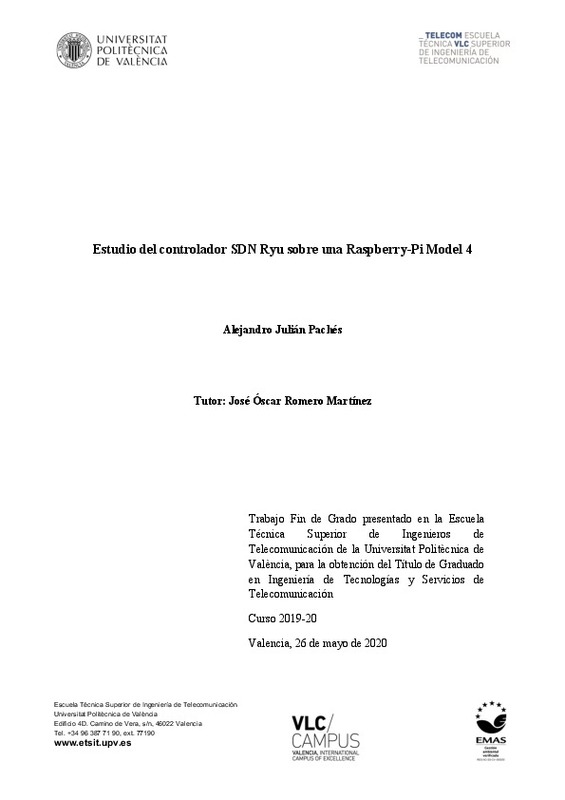JavaScript is disabled for your browser. Some features of this site may not work without it.
Buscar en RiuNet
Listar
Mi cuenta
Estadísticas
Ayuda RiuNet
Admin. UPV
Estudio del controlador SDN Ryu sobre una Raspberry-Pi Model 4
Mostrar el registro completo del ítem
Julián Pachés, A. (2020). Estudio del controlador SDN Ryu sobre una Raspberry-Pi Model 4. http://hdl.handle.net/10251/152347
Por favor, use este identificador para citar o enlazar este ítem: http://hdl.handle.net/10251/152347
Ficheros en el ítem
Metadatos del ítem
| Título: | Estudio del controlador SDN Ryu sobre una Raspberry-Pi Model 4 | |||
| Autor: | Julián Pachés, Alejandro | |||
| Director(es): | ||||
| Entidad UPV: |
|
|||
| Fecha acto/lectura: |
|
|||
| Resumen: |
[ES] En la actualidad, la demanda de servicios de telecomunicación es tan grande que los operadores deben buscar soluciones muy complejas y que satisfagan la creciente necesidad de acceso a Internet. La poca escalabilidad ...[+]
[EN] Nowadays, the demand for telecommunication services is so great that operators must look for very complex solutions that satisfy the growing need for Internet access. The low scalability of traditional networks together ...[+]
|
|||
| Palabras clave: |
|
|||
| Derechos de uso: | Reconocimiento - No comercial - Sin obra derivada (by-nc-nd) | |||
| Editorial: |
|
|||
| Titulación: |
|
|||
| Tipo: |
|
recommendations
Este ítem aparece en la(s) siguiente(s) colección(ones)
-
ETSIT - Trabajos académicos [2408]
Escuela Técnica Superior de Ingenieros de Telecomunicación







